Mad Men and Women of the New Peace Corps
John writes —
In this series that I published years ago and republishing for those who have come lately to the site, I will attempt, in short-hand fashion, to tell the history of the first years of the agency and the men and women who created the Peace Corps.
The history begins
In those early days of 1960s the agency was full of Mad Men (and a few Mad Women) who were living in a world-of-work atmosphere very much like the provocative TV AMC drama Mad Men, the program that followed a handful of ruthlessly competitive men and women in New York City who worked in advertising on Madison Avenue. They were living (in case you never saw the series) in an ego-driven world where “selling” was all that matters.
That series, set in the early Sixties and has everything many of us grew up with: cigarette smoking, drinking, sexism, adultery, racism, etc. (I might have left out a few ‘isms’.)
Well, some (if not all) of this happened as well in Peace Corps HQ. Not so much ‘like’ the stylized world of Madison Avenue, after all, the Peace Corps is a government agency and is in Washington, D.C., but a lot of the other stuff went on, in-out-and around D.C. While the Peace Corps was, after all, off to do good in the world, not everyone who worked there was an Eagle or Girl Scout.
There were a lot of ego-driven men (and women) fueled by the success of the Kennedy campaign and election who had rich personalities, great histories, and big appetites. They filled the offices in the first Peace Corps HQ, the old Maiatico Building, (across Lafayette Park from the White House) and they were often spotted rushing from floor to floor in pursuit of peace and justice and a few less honorable goals.
Some of them became my friends and I have stayed in touch with them over the years. Sadly more than a few have, as we say today, passed away.
So, without telling too many tales out of the Maiatico Building, over the next few weeks, I’ll give an accounting of the Mad Men and Women of the Peace Corps who made the building an exciting place to work, even if it was on the fringes of the White House, Georgetown, and the New Frontier.
Pat Kennedy
I’ll begin with “loose history of the agency by telling you about first boss at Peace Corps Headquarters when I returned home from Ethiopia in 1964. He was Chief of what was named the Division of Volunteer Field Support. His name is Padraic Kennedy.
Pat Kennedy wasn’t a relative to the ‘other’ Kennedys, but he was never anxious to tell others that. It was nice in those balmy days of the early Sixties to ride the smooth carpet of the most famous name in America. Though, in all honesty, Pat never ‘lived off’ his name. He made his own way in Washington, D.C. and the Peace Corps. A good guy who treated everyone fairly, and unlike some others, he didn’t use his ‘name connection’ to get ahead in D.C.
[When he left the government in 1972, he moved to Columbia, Maryland and became essentially the mayor of that planned community for next 26 years until he retired.]In 1961, however, he was like most of those early staffers, young, twenty-eight, married to wonderful smart wife, Ellen Conroy, the sister of Frank Conroy, who wrote Stop-Time, and was for years director of the Iowa Writer’s Program.
Pat, too, was an academic when he started at the Peace Corps. He was a teaching fellow at the University of Wisconsin in Madison (history) when he heard about JFK’s late-night challenge to the students at the University of Michigan. It was an idea he loved.
Pat Kennedy had a connection to JFK–a real connection–that was Lemoyne Billings, a close friend of JFK. And Pat would work with Billings while campaigning for Kennedy in Wisconsin.
Pat had been in the Army in Europe (drafted, as we all were in those days) and then studied at Columbia, and was awarded a Woodrow Wilson Fellowship. He was going to be a teacher. At Wisconsin, he had earned his M.A. in American history, publishing articles in historical journals about Senator Robert LaFollette and the foreign policy of the Progressives.
But all that academic stuff went out the window when he took over the job of directing Kennedy’s campaign headquarters in Madison in JFK’s run for the White House. Pat says of that period, “my effectiveness was considerably enhanced by my name. Everyone wondered which of the Kennedys I was.”
After the campaign, he turned down the job of Executive Director of the Democratic Party in Wisconsin. He wanted to be in Washington where the action was. And that’s where Lemoyne Billings comes into the story.
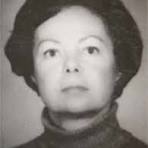
Coates Redmon was a senior editor at the Peace Corps in its first days, later she worked in the White House for Rosalynn Carter and was director of the Robert F. Kennedy Journalism Awards.
In her book, Come As You Are: The Peace Corps Story, Coates Redmon quotes Kennedy:
“Arriving in D.C. I made a date with Lem Billings to go hear George Shearing at the Embers, and I told him I was really interested in the Peace Corps. As luck would have it, Lem was going down to Palm Beach the next day to be with the president-elect. He scared me, though. He said he didn’t know for sure whether or not JFK had used the peace corps idea as campaign bait or whether he was interested in it seriously–whether it was actually going to be part of his administration. Then I thought to myself. ‘Now, don’t be ridiculous. The man proposed it in a major foreign policy speech. [Cow Palace] Surely, he couldn’t renege on it.”
“I didn’t hear anything from Lem for about a month, and then one night back in Madison after grading blue books until 2:00 a.m., I fell asleep when the phone rang. It was so cold I almost didn’t get up, but you wonder about phone calls at that hour, so I got up and answered it. A woman said, ‘Mr. Kennedy? The White House is calling.’ In a second, there was Lem Billings on the phone saying cheerily, ‘Guess where I am.’
“I said, ‘Are you at the White House by any change?’
“I’m not only at the White House,’ said Billings. ‘I’m in the Lincoln bed. Are you still interested in the Peace Corps?’
“Damn right!’
‘Well, I’ve talked to Sarge Shriver and he’d like you to come to Washington for an interview immediately. How soon can you get here?’
“I’ll be there in twenty-four hours.” I said.
Pat was driving to D.C. when he heard on the car radio that JFK had signed the executive order creating the Peace Corps. It was March 1, 1961. He stepped on the gas and reached Washington that night and started working at the Peace Corps the next day.
There was no specific job. There were no jobs. There were 12 or so people working for the new agency: Sarge, Maryann Orlando, Sally Bowles, Nancy Gore, Mitzi Mallina. Warren Wiggins, Bill Josephson, Charlie Nelson, Gordon Boyce, Al Sims, Ed Bayley, and Harris Wofford.
“Wofford was dividing his time between the Peace Corps and the White House,” Kennedy recalls. “He interviewed me and he kept yawning in my face. I knew he was important; I’d heard about him on the campaign. He was close to Shriver. And I thought, ‘Oh my God, I’ve had it. I’m boring him to death.’
Pat wasn’t boring Wofford, it was because Wofford was working eighteen-hour days in two jobs.
Moving in
Not having any office furniture in the few rooms of the ‘peace corps’ in the Maiatico Building, Pat took it upon himself to do a little ‘midnight requisitioning’ from the AID offices in the same building. It was easy, he said, as the AID people were gone by 5:00 p.m. and the new Peace Corps folks worked half the night.
His first job was answering mail. There were thousands of letters stacked up from people wanting to become Volunteers. As the building became organized, he went onto become the sole training officer for several months, and help to set up the first training programs, which were to Latin America and Africa.
Kennedy had never been to Africa, nor had anyone else. In fact, he wasn’t sure the exact geographical location of Ghana and Nigeria (first countries to get PCVs). Kennedy started to find “Africanists” on U.S. campuses and invited them to D.C. for a week of brainstorming.
David Apter came in from Berkeley; Gray Cowan from Columbia; Sinclair Drake from Roosevelt University in Chicago; Robert Lystad from Johns Hopkins. They set up the Ghana I training program at Berkeley.
Six weeks later, in mid-August 1, 1961, Ghana I was ready for Ghana. “Here today, Ghana tomorrow.” the PCVs chanted. Arriving in Accra, after having met President Kennedy at the White House, and having partied most of the night at the Ghana Embassy in D.C., they were greeted by Ghanian officials on the airport tarmac in Accra where, as a group, they sang the National Anthem of Ghana.
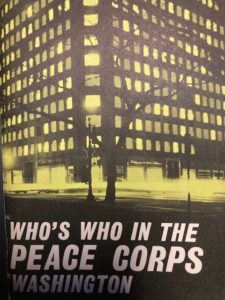
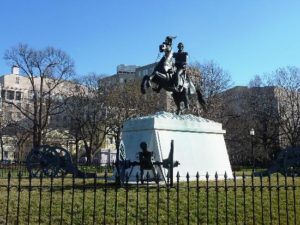
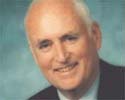
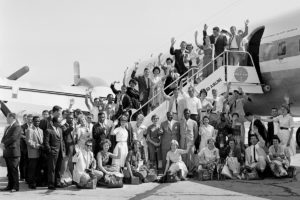
I delighted in reading this flashback of those early years of the Peace Corps. I was fortunate to be one of the early participants during this exciting time as the PC was evolving. At the time I was working as a secretary at the D.C. Chapter of the Red Cross and Helen Curtis, the wife of Laurence Curtis, the US representative from Massachusetts, was a volunteer at the Red Cross and she said “Gwen you are too smart to be working here for the rest of your life, you should go work for the Peace Corps, I know someone there you can talk with and her name was Mitzi Mallina, noted above in the article. So she called Mitzi and scheduled a time for me to talk with her. I met with her shortly after that and Mitzi sent to meet with Ruth Olsen the Director of Personnel. Ruth said “how would you like to work for Pat Kennedy, it’s a new Division and he is heading it up. I said why not, and within two weeks I was in the new Division sitting outside of Pat’s office answering phones, learning how to maneuver within a government setting. I was a very lucky young person, not long out of high school, having arrived almost directly from a very rural farm environment in South Ga., with a detour for six months in a Jacksonville, Fla. secretarial school, before moving to the D.C. area. I worked for Pat two years, along with many of the people noted in the artel above, before an opportunity opened for me to go work for Willie Unsoeld, the Director of the Peace Corps in Nepal. These four years dramatically changed my life and my journey has only been enriched beyond what I could have ever imagined. I am forever grateful for all the mentoring and support provided by those early PC staff that took me under wing and helped me succeed. Gwen
….And you were a great PCV later in Nepal, Gwen
John, to clarify I was the Admin Asst/Secretary in Nepal and returned to the States & became a Volunteer In Service to America (VISTA) Pat Kennedy was head of VISTA and convinced me it would be a good experience to transition back into the U.S. He was right and the year I spent in Des Moines as a Vista in 1968 was an eye opener and a another life changing experience.
Thanks a lot for these fascinating stories, John. Please keep them coming! And thanks for publishing Ben East’s review of my recent Peace Corps memoir, If You Turn to Look Back.
What a gas those days must have been. In 1983 while reminiscing about the launch of the Peace Corps Sarge told me that at the end of the day Warren Wiggins or Bill Josephson would stop by his office and say, “Congratulations, you have had a good day—you only violated 21 federal regulations in order to get these first groups of Volunteers to Ghana and Nigeria”. Sarge did not mention the furniture pilfered from USAID—just that Wiggins and Josephson whom had come over from USAID and were instrumental in getting PC off to a big launch (they had submitted the original “Towering Task” concept paper—proposing PC GO BIG rather than start with little pilot programs as proposed by other experts).
More another time.